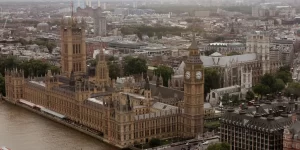‘I am very confused…One of you has got to be right and one of you has got to be wrong.’[1]
In a few words, Vicky Ford MP captured the mood of the ongoing debate over the GB electricity market design. Ford was responding to arguments put forward by witnesses to the Energy Security and Net Zero (ESNZ) Committee on the impact of moving from national to zonal pricing, but was left unconvinced by either side.
The Review of Electricity Market Arrangements (REMA) was launched in July 2022 and proposed wide-ranging reforms to deliver a cleaner and more secure energy system.[2] Two years later, the Government has published the second REMA consultation and taken forward a handful of proposals for further input. One of the most radical changes remains an option, the introduction of zonal pricing to the GB wholesale electricity market.[3]
With just under a month remaining for organisations to finalise their responses to the second REMA consultation, the Brevia Energy team has examined the key arguments being advanced for and against zonal pricing.
Why are we talking about zonal pricing?
As part of the second REMA consultation, DESNZ is seeking input from industry on two options for future wholesale electricity pricing: introducing zonal or retaining the national pricing model. DESNZ has discounted a third option, nodal pricing, due to its possible impact on investor confidence and the deliverability of the 2035 decarbonisation targets.[4]
Under the current national pricing model, generation and demand users across GB receive the same wholesale electricity price, irrespective of their physical location, regional network constraints, or the system costs and benefits associated with an asset’s operation. Under zonal pricing, the GB electricity network would be split into several zones, each with their own price and boundaries that are drawn to reflect where major network constraints occur.
The Case for Zonal Pricing
System Efficiency: National wholesale pricing does not send locational signals that incentivise market participants to operate and locate in a way that aligns with the physical needs of the system, leading to operational and balancing issues. Zonal pricing would send more granular locational signals, encouraging energy system users in each region to produce or consume in a way that benefits the system. An example of this is the way interconnectors currently operate. As highlighted by the ESO, an interconnector connected in the north-east currently gets the same signals as an interconnector in the south-east regardless of need in either location. This can lead to interconnectors exporting and importing regardless of local demand and network constraint.[5]
Economic Benefits: Analysis conducted on behalf of Ofgem estimates that the net consumer benefits of locational pricing (zonal or nodal) over the period 2025-2040 could range from £15-£51 billion compared to current arrangements as a result of reduced constraint management costs, lower overall wholesale costs, and lower intra-GB congestion rent.[6] DESNZ estimates that, assuming these savings are fully passed through, zonal pricing could result in an average consumer benefit of £20-45pa per household over 2030-2050.[7]
Fair Transition: Zonal pricing could contribute to the Government’s Levelling Up agenda. With most of GB’s demand located in the south and renewable generation in the north, zonal pricing could incentivise new industries to locate in areas with high renewable generation such as Scotland, where they can benefit from the potentially lower generation costs. Likewise, the potential variation in wholesale prices across regions could unlock investment in demand-side-response in high-demand zones, and in flexible generation and storage technologies in over-supplied zones.
The Case for Continuity
Cost of Capital: Investors looking to develop projects under a zonal system would face greater risk, since both the price and volume of energy dispatched from their assets would become less predictable. The higher financing costs for these projects are then likely to be passed back down to the consumer, offsetting the potential savings that a zonal pricing regime would deliver. Whilst the exact impact of this is indeterminate, LCP analysis commissioned by SSE highlighted that, even if the cost of capital for low-carbon generation raises by 1 per cent, that would add £45bn to overall costs by 2050.[8]
Equitable Treatment: Whilst zonal pricing may incentivise investment in new regions, the needs of consumers within these regions cannot be viewed as a monolith. Regen highlighted that locational pricing could arbitrarily disadvantage vulnerable customers in high-demand regions generally considered affluent.[9] For example, vulnerable consumers in London could be pushed further into fuel poverty under a locational system. Even if disparities between domestic users are levelised, zonal pricing could still disincentivise investment in certain regions. National pricing provides a level playing field for both consumers and industry.
Delivery Timeline: The UK has ambitious and fast-approaching net zero targets. The ESO has stated that zonal pricing could be delivered in 5 years.[10] Assuming a decision is made in 2025, this means that zonal pricing will not be in place by 2030, leaving little time for the UK to deliver on its clean electricity generation targets. Energy UK has also questioned the Government’s ability to deliver this radical change at this pace, as well as the extent of constraint savings that a zonal system would deliver.[11]
Next Steps
The are strong arguments on both sides of this debate. Up to and beyond the consultation deadline of 7 May 2024, it is essential that organisations in the energy sector engage with policymakers, ensuring that officials are fully informed about the potential impact of introducing zonal pricing, be that positive or negative. With the implementation of the policies proposed by REMA due in 2025, it is vital that organisations also engage with the Labour Party to ensure key stakeholders who could form the next Government are well-briefed on this policy area and the challenges that may need to be addressed in the next Parliament.
BREVIA ENERGY PROVIDES STRAIGHTFORWARD PUBLIC AFFAIRS AND PUBLIC RELATIONS SUPPORT TO ORGANISATIONS OPERATING IN THE UK ENERGY SECTOR.
Discover how Brevia Energy can help you and your organisation by visiting: www.brevia.co.uk/sectors/energy/. You can also contact the Brevia Team on 020 7091 1650 or email contact@brevia.co.uk
Notes
[1] Vicky Ford MP, House of Commons Energy Security and Net Zero Committee, Oral evidence: A flexible grid for the future, 20 March 2024, 2023-24 session, HC 113, link
[2] Department for Business, Energy and Industrial Strategy, Review of electricity market arrangements, 18 July 2022, link
[3] Department for Energy Security and Net Zero, Review of electricity market arrangements (REMA): second consultation, 12 March 2024, link
[4] Ibid.
[5] Claire Dykta, House of Commons Energy Security and Net Zero Committee, Oral evidence: A flexible grid for the future, 20 March 2024, 2023-24 session, HC 113, link
[6] Ofgem, Assessment of Locational Wholesale Pricing for GB, 30 October 2023, link
[7] Department for Energy Security and Net Zero, Review of electricity market arrangements (REMA): second consultation, 12 March 2024, link
[8] SSE, BEIS Review of Electricity Market Arrangements (REMA): SSE response summary, 10 October 2022, link
[9] Regen, Review of Electricity Market Arrangements Consultation Response from Regen, 10 October 2022, link
[10] Claire Dykta, House of Commons Energy Security and Net Zero Committee, Oral evidence: A flexible grid for the future, 20 March 2024, 2023-24 session, HC 113, link
[11] Energy UK, Energy UK high-level views on Locational Marginal Pricing, 4 August 2023, link




